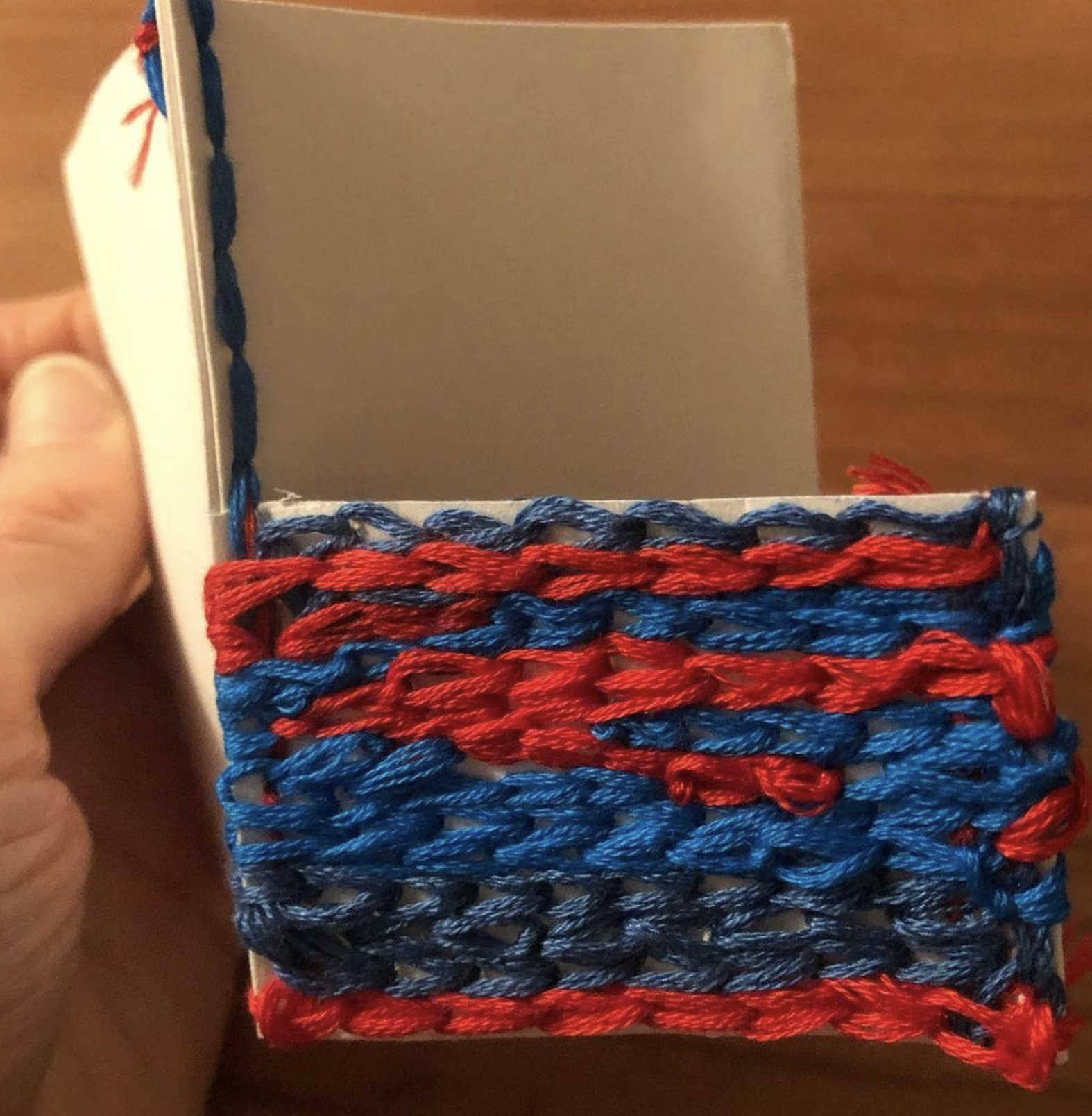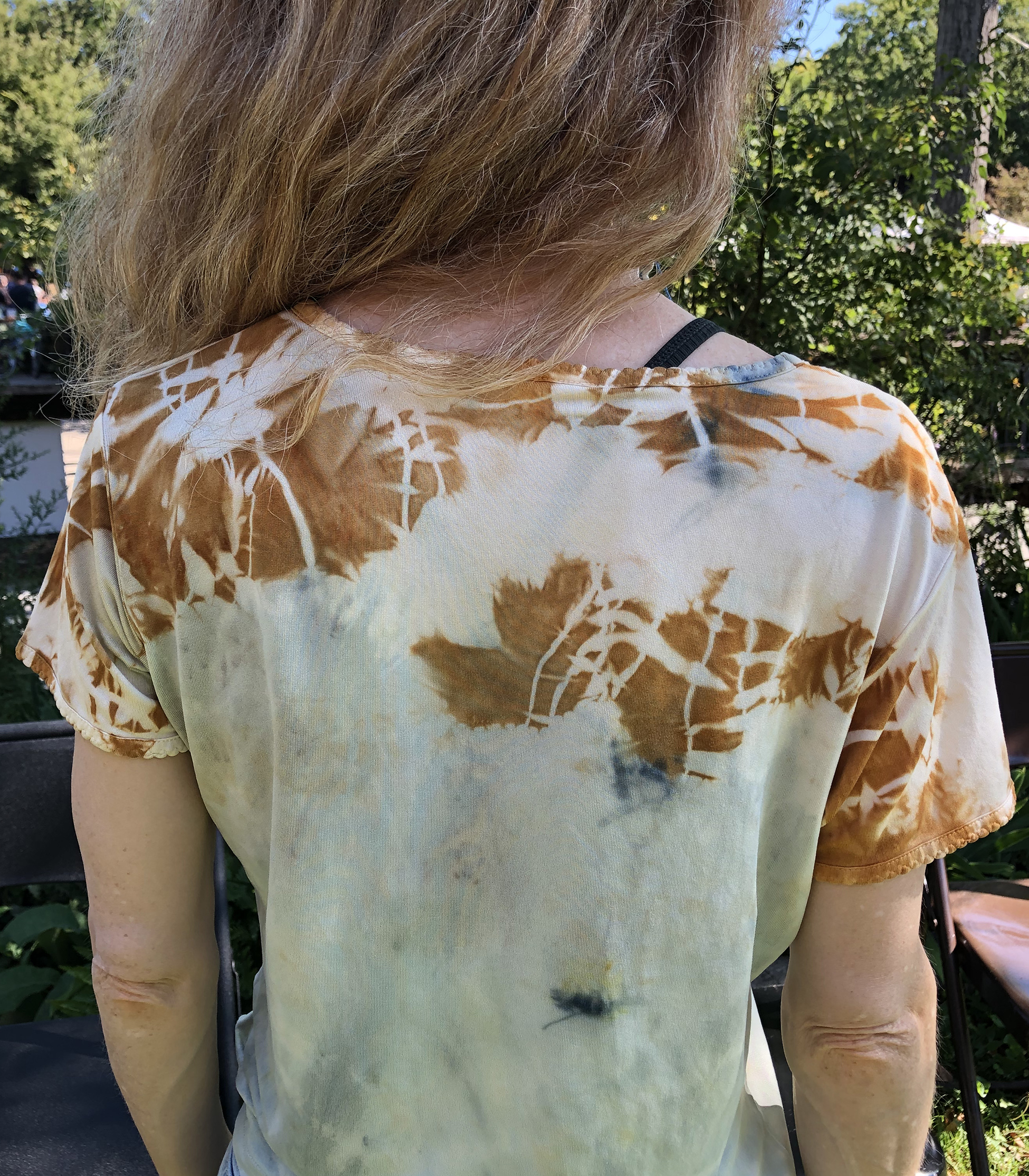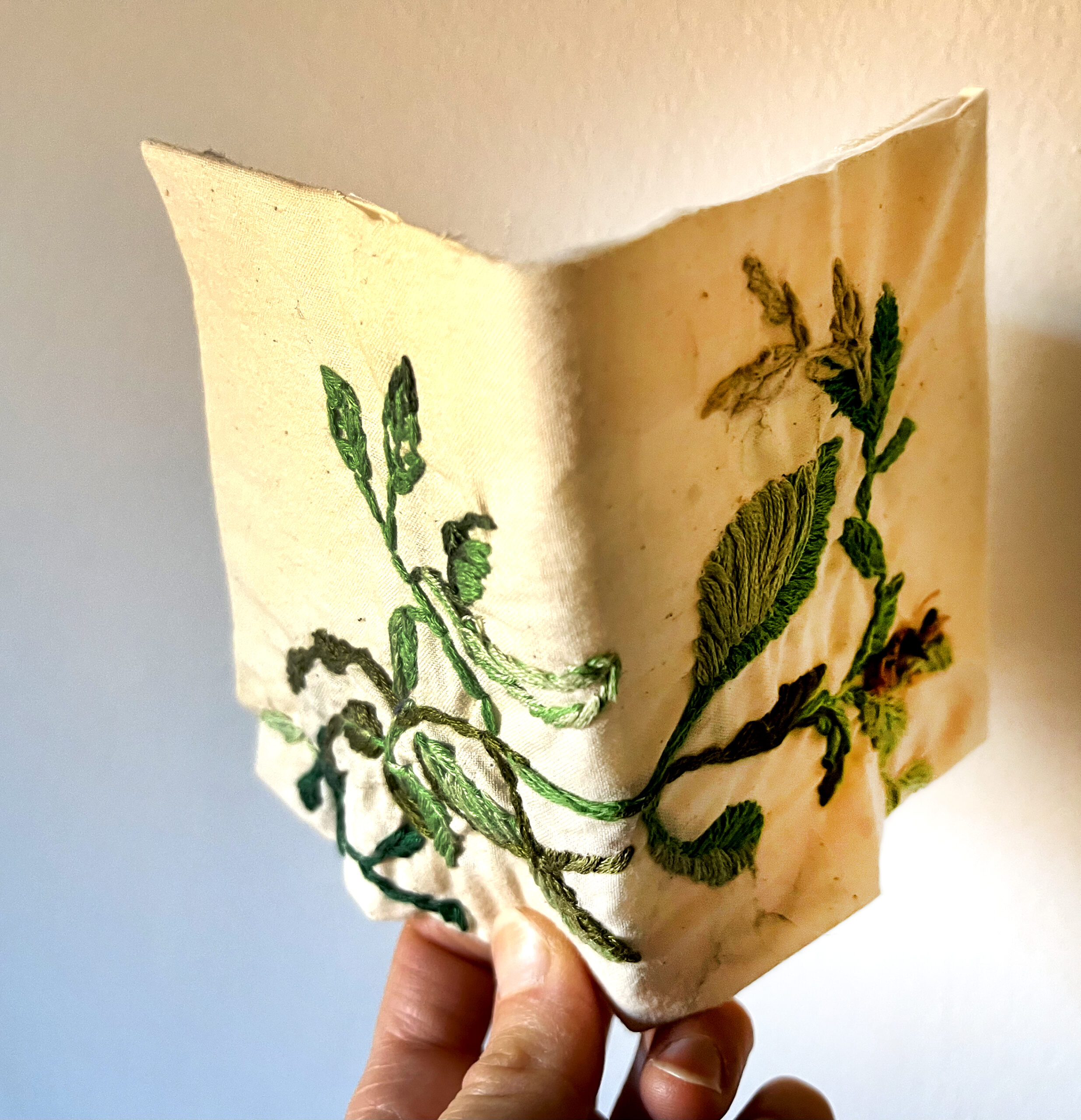Event Info
This virtual workshop takes place on Zoom on Thursday, August 11, from 6–8pm.
- Thursday, August 11, 6:00–8:00pm.
Please Note: Registration for this workshop closes on August 10 at 11:59pm. The last day to order a Materials Kit for this class is Monday, August 1.
About the Workshop:
This virtual class at Center for Book Arts is taught by instructor Iviva Olenick.
This virtual workshop combines book arts and fiber arts through hands-on and perceptual explorations with materials typically found at home, and ones specially prepared by the instructor in the Fibers kits. Through process and materials-heavy exploration, gain confidence recognizing the color potential in food and yard waste, and develop ways to create unique book covers through dyeing, stitching and applying non-woven fabrics to paper and/or fabric. Begin thinking of fabric as a sculptural tool for creating boxes and covers for books.
Students will learn how to use organic materials like fruits, vegetables, yard waste, leaves, and flowers to dye fabric in a variety of colors! Olenick will teach students the bundle dyeing technique, which combines color theory, printmaking, and fiber arts.
Class size is limited to ensure an optimal student-to-teacher ratio. Register now before the remaining spots fill up!
Required Materials:
It is highly recommended that students purchase a Fibers kit for this course! If you want to go it alone, here is what you’ll need:
- Preferably silk fabric that has been scoured (pre-washed in soda-ash) and mordanted (soaked in water that had alum dissolved in it for at least 1 hour or overnight). Instructions for scouring and mordanting can be found using the links. If you don’t have silk, you can use cotton, linen or wool.
• If you are scouring or mordanting fabric, you need to purchase soda ash and alum using the links in the bullet point directly above this one.
• undyed string, yarn or undyed rubber bands
• food waste – avocado skins well washed, berries of any kind, purple cabbage, acorns, black beans, onion skins, hibiscus flower petals or calyxes, eucalyptus leaves, purpleleaf sandcherry tree leaves
• cotton muslin for stitching experiments
• 1 yard of heavyweight, fusible interfacing
• 1 package of lightweight fusible interfacing
• embroidery thread or sewing thread
• needles with a sharp tip and eyes large enough to thread. I personally like size 18-22 chenille needles
• paper you would like to experiment with stitching on
All students must have:
- a dye pot, which should be either stainless steel or coated enamel, and not to be used for cooking after becoming a dye pot.
- a steamer or a piece of aluminum foil with holes poked in it large enough to fit snugly over the dye pot.
- water for steaming
- an iron
- fabric scissors
- any additional food or yard waste you would like to experiment with for making color
About Iviva Olenick
Iviva Olenick is a Brooklyn-based artist developing textiles from seed to fiber and dye and using textiles as texts.
Her work has been exhibited all over the United States, including the Philadelphia Museum of Art; Museum of Design Atlanta; the Hunterdon Museum, NJ; Sugar Hill Children’s Museum of Art & Storytelling, NYC; the Center for Book Arts, NYC; the Old Stone House, Brooklyn; Wyckoff House Museum, Brooklyn.
All images courtesy of the instructor.
In order to best serve our community near and far, many of our online classes are pay-what-you-can. The amount you choose to pay goes directly toward our instructors and toward creating scholarship opportunities for the future.




